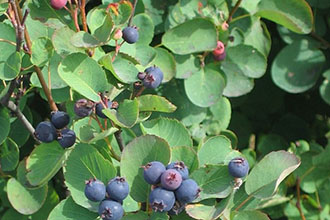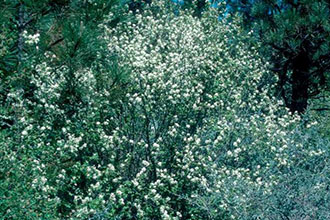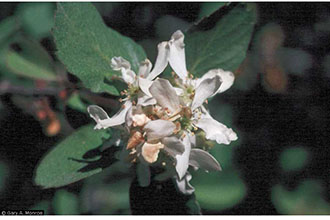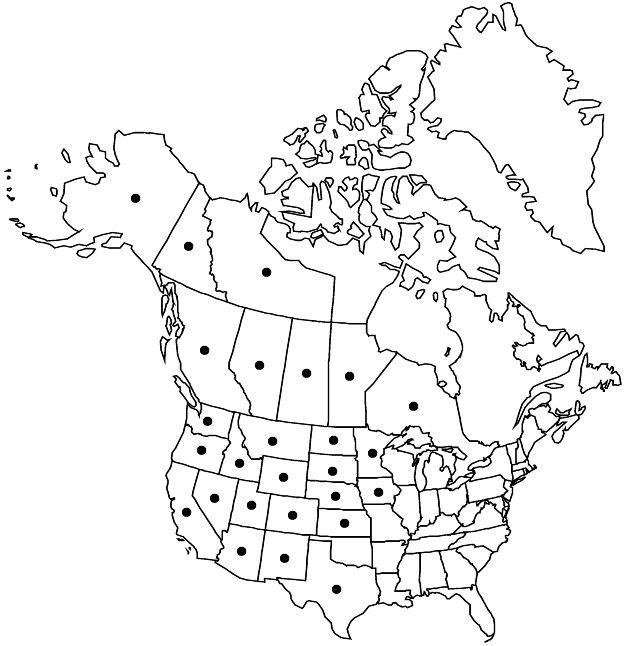Taxonomy: Kingdom - Plantae (plants). Subkingdom - Tracheobionta (vascular plants). Superdivision - Spermatophyta (seed plants). Division - Magnoliophyta (flowering plants). Class - Magnoliopsida. Subclass - Rosidae. Order - Rosales. Family - Rosaceae (rose). Genus - Amelanchier Medik. Species - Amelanchier alnifolia (Nutt.) Nutt. ex M. Roem.
Ecology: Saskatoon serviceberry is common in lower-elevation coniferous forests. It also occurs in montane chaparral, mountain shrub, and the upper limits of pinyon-juniper (Pinus-Juniperus spp.) communities. In plains grasslands it mostly occurs in wooded draws, grassland-woodland interfaces, and riparian zones. Saskatoon serviceberry is common in riparian areas throughout its distribution. Riparian associates in the Northern Rocky Mountains include white alder (Alnus rhombifolia), hawthorn (Crataegus douglasii), chokecherry (Prunus virginiana), bitter cherry (P. emarginata), Greene mountain-ash, and elderberry (Sambucus spp.). Saskatoon serviceberry rarely establishes from seed in early stages of primary succession. Saskatoon serviceberry is common after disturbances such as fire, logging, or insect outbreak. It may persist in the understory for decades, but eventually dies out with canopy closure. Where available in quantity, Saskatoon serviceberry is often a primary or important component of the winter diet of big game species. Saskatoon serviceberry is planted as an ornamental and to produce commercial fruit crops.



